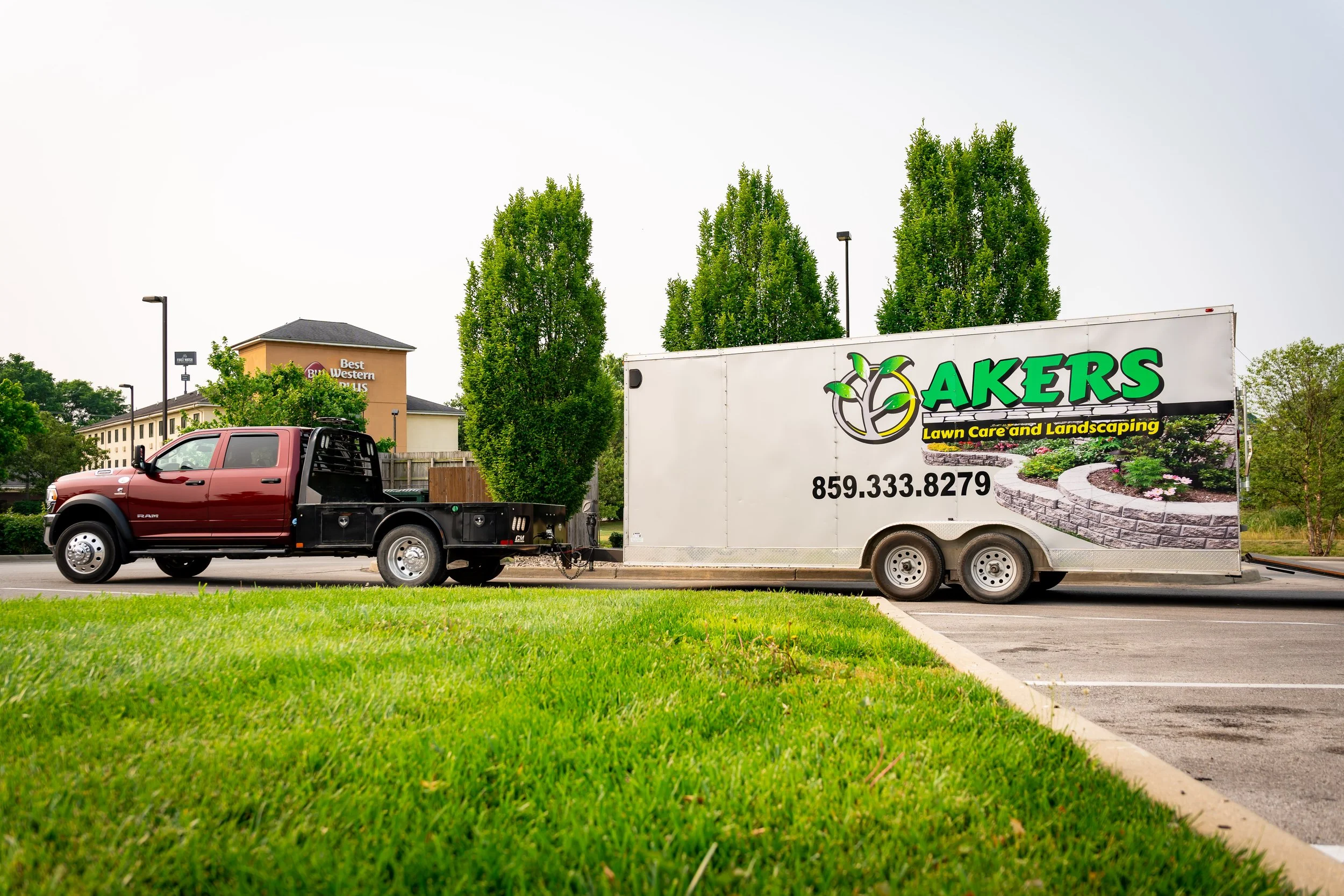What Fertilizer Should You Apply to Your Lawn in the Fall?
If you want a lush, healthy lawn in the spring, the work starts in the fall. Fertilizing your yard at the right time—and with the right product—helps your grass store nutrients, build stronger roots, and survive the winter. In this guide, we’ll cover the best fertilizer for fall lawn care in Kentucky, when to apply it, and how professional help can make the process simple.
Akers Lawn Care and Landscaping ©
Why Fertilize in the Fall?
During the cooler months, grass shifts energy from blade growth to root development. Fertilizer in the fall provides essential nutrients your lawn needs to:
Strengthen root systems before winter
Improve disease resistance
Green up faster in the spring
Fill in thin or bare areas
What Type of Fertilizer Works Best in the Fall?
When shopping for fertilizer, you’ll notice three numbers on the bag—representing Nitrogen (N), Phosphorus (P), and Potassium (K). Here’s what to look for in fall:
High Nitrogen (N): Fuels root growth and energy storage, giving your lawn a strong foundation for spring.
Lower Phosphorus (P): Helps with root health, but many Kentucky soils already have adequate levels.
Adequate Potassium (K): Strengthens grass against cold weather and disease.
In Kentucky, most fall fertilizers fall into the 24-0-10 or 29-0-5 range (higher nitrogen, low or no phosphorus, moderate potassium).
Akers Lawn Care and Landscaping ©
When Should You Fertilize in Kentucky?
The ideal time for fall fertilization in Kentucky is late September through early November, before the first hard frost. Aim for a day when:
Temperatures are mild (around 60–70°F)
Soil is slightly moist (a light rain the day before works perfectly)
Grass is still actively growing but not stressed by heat
Tips for Applying Fall Fertilizer
Mow First: Fertilizer works best when applied to recently cut grass.
Water Afterward: A light watering helps nutrients absorb into the soil.
Spread Evenly: Use a broadcast spreader to avoid patchy results.
Combine with Aeration: Aerating before fertilizing ensures deeper nutrient penetration.
Professional vs. DIY Fertilization
While DIY fertilizer is possible, professional service ensures:
The right fertilizer blend for Kentucky soils
Proper application rates (over-fertilizing can damage grass)
Timing that aligns with your lawn’s exact needs
At Akers, we combine fertilization with fall services like aeration and dethatching—giving your lawn the complete package for stronger growth.
Akers Lawn Care and Landscaping ©
Local Expertise: Fall Lawn Fertilization in Kentucky
Every lawn is unique, but one thing is certain: fall is the most important time of year to fertilize in Kentucky. With years of experience serving Georgetown and Central Kentucky, the Akers team knows exactly what your grass needs to thrive when spring arrives.
Don’t let your lawn head into winter unprepared. The right fertilizer this fall will lead to a greener, healthier yard next year. Schedule your fall lawn fertilizer service with Akers today and give your grass the nutrients it deserves.



